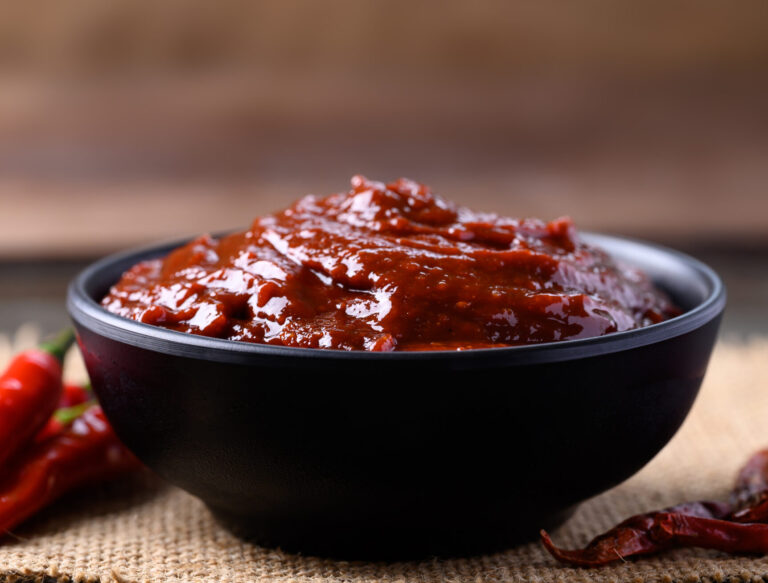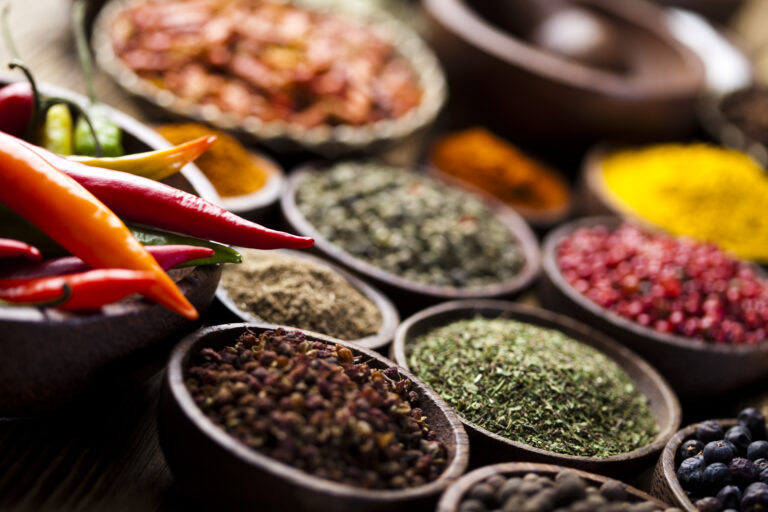5 Best Tamarind Pastes for Delicious Sweet and Sour Glazes
Choosing the best tamarind paste for sweet and sour glazes involves considering factors like concentration, texture, and additives. Quality varies among products, so look for pure options without unwanted ingredients.

Tamarind paste is a common ingredient in many cuisines, particularly Asian and Latin American. It provides a unique sweet and sour flavor, making it perfect for glazes, sauces, and marinades. When choosing the best tamarind paste for your kitchen, it’s important to consider factors like concentration, pulp texture, and added preservatives.
Not all tamarind pastes are created equal. Some have a smoother consistency, while others may contain fibers and seeds. Pay attention to the ingredient list to avoid unwanted additives that can affect the taste.
Disclosure: As an Amazon Associate, this site earns from qualifying purchases. Thank you!
Best Tamarind Pastes
Let’s explore our top picks for tamarind pastes that create delicious sweet and sour glazes.
Pure Organic Tamarind Paste Concentrate
- Rich, authentic flavor
- No added sugar or preservatives
- Versatile for different cuisines
- Texture inconsistency between batches
- Glass jar can be fragile
- Slightly pricier than others
We recently brought home a jar of Pure Organic Tamarind Paste Concentrate, and it didn’t take long to fall in love with its rich and tangy flavor. Perfect for creating a delicious sweet and sour glaze, this paste shines in both Indian and Thai dishes.
One thing we love about this product is its purity. There are no added sugars or preservatives, which makes it a healthier choice for our recipes. The flavor is genuinely authentic, which enhances our dishes remarkably.
We also appreciate the versatility of this paste. Whether it’s for chutneys, stir-fry, or even a glaze for grilled meats, it adds a zest that’s hard to beat. However, we did notice that the texture can vary from batch to batch, sometimes being pourable and other times more thick, which can be a bit surprising.
Another thing to keep in mind is the glass jar packaging. While it maintains the product’s quality, there’s always a risk of it breaking. Despite this minor concern and the slightly higher price, we believe it’s worth every penny for the flavor it brings.
Tamicon Tamarind Paste
- Intense flavor
- Great for multiple cuisines
- Easy to use
- Packaging issues
- Can be too runny
- Expensive for the amount
We love using this Tamicon Tamarind Paste for our glazes. It’s the secret to achieving that mouthwatering balance of sweet and sour.
The strong, tangy flavor brings dishes to life, especially in curries and pad Thai. Even just a spoonful is enough to transform your meal.
Their packaging needs improvement. It’s a bit awkward to handle and can be messy. Still, the superb taste makes it a staple in our kitchen. The slightly higher price is worth the quality.
Umintzkss Tamarind Paste
- Fresh and natural, no additives
- Easy to work with, seedless
- Rich, genuine tamarind flavor
- Requires refrigeration after opening
- Can be messy to prepare
- Some may find it too tangy
Umintzkss Tamarind Paste is a great addition to our kitchen. The paste has a fresh, tangy flavor that pairs wonderfully with a variety of dishes. We appreciate its authenticity, reminding us of home-cooked meals.
The seedless consistency is a huge plus. It’s much easier to work with compared to other tamarind products. Preparing a delicious tamarind glaze is straightforward: just soak the paste in warm water and mash it up.
There are a few drawbacks. It does need to be refrigerated after opening. Also, some folks may find it a bit too tangy for their liking. Despite these minor issues, we believe the natural taste and ease of use make it a fantastic choice for sweet and sour glazes.
Rani Organic Tamarind Paste
- 100% Natural and USDA Certified Organic
- Packed in a sturdy glass jar
- No added sugar or syrup
- Some jars may arrive with broken seals
- A bit expensive compared to non-organic options
- Occasionally ships with a sticky mess
Using Rani Organic Tamarind Paste, the flavors in our glaze turned out incredibly rich and tangy. The paste’s natural acidity balanced well with our sweet ingredients, making it perfect for sauces and marinades. The glass jar ensures the paste stays fresh and uncontaminated. You can taste the purity in each spoonful, reflecting its organic and non-GMO certifications.
However, we’ve had a couple of instances where the jars arrived with broken seals, leading to spills. Customer service did handle the issues efficiently, but it was a minor hassle. Considering the quality, the price is a bit higher, but for an organic product, it’s understandable.
Despite the minor downsides, this paste really lifts the flavor of any dish. From stir-fries to curries, it adds a delightful tanginess. If you’re seeking a reliable and flavorful tamarind paste, this one is worth trying.
Jiva Organics Tamarind Paste
- - Made from pure tamarind pulp
- - No added sugar or preservatives
- - Versatile for various cuisines
- - Slightly high price
- - Limited availability
- - Mildly sour for some tastes
We recently used the Jiva Organics Tamarind Paste in our kitchen, and it did not disappoint. The natural tartness of the paste adds an amazing zing to our chutneys and glazes. We love that it’s made from pure tamarind pulp and contains no added sugar or preservatives.
This tamarind paste is versatile, fitting well into Indian, Thai, and African recipes. Whether you’re preparing a tangy chutney or adding a sour note to a curry, this paste brings out vibrant flavors in each dish. Additionally, it’s gluten-friendly, making it suitable for everyone at the table.
One downside is that the product is a bit pricier than some other options available. Also, it could be slightly more sour than what some folks prefer, but we find that it balances well when mixed into recipes. Lastly, you might need to hunt a bit to find it as it’s not as widely available.
Overall, if you’re seeking a dependable tamarind paste for sweet and sour glazes, Jiva Organics Tamarind Paste is worth considering.
Buying Guide
Choosing the best tamarind paste for sweet and sour glazes can be easy if we know what to look for. Here are some key factors to consider:
Ingredient Quality
Look for tamarind paste made from 100% tamarind without any added preservatives or artificial ingredients. Pure tamarind offers the richest taste.
Consistency
For glazes, we want a paste that is smooth and free of seeds or fibers. This ensures even mixing and a silky finish on our dishes.
Packaging
Opt for tamarind paste in airtight containers. This keeps the paste fresh for longer. Also, a resealable package is a bonus for easy storage.
Flavor Profile
The perfect paste should balance sweet and sour flavors. Taste a small amount to ensure it meets our flavor preferences.
Color
High-quality tamarind paste usually has a deep brown color. Avoid pastes that look too pale or watery.
Usage
Consider how much tamarind paste we will use. Smaller jars are great for occasional use, while larger containers are more economical if we use tamarind often.
Price
Check the price per ounce. Sometimes, larger packages offer better value.
Here’s a quick comparison table for the key features:
| Feature | Considerations |
|---|---|
| Ingredient Quality | Look for 100% tamarind, no additives |
| Consistency | Smooth, seed-free |
| Packaging | Airtight, resealable |
| Flavor Profile | Balanced sweet and sour |
| Color | Deep brown |
| Usage | Small or large containers based on need |
| Price | Compare price per ounce |
Review these features to make the best choice and enhance our sweet and sour glazes.
Frequently Asked Questions
We often get questions about the best tamarind paste for sweet and sour glazes. Here’s everything you need to know, from ingredients to preparation methods.
What are the key ingredients for a classic tamarind sauce recipe?
A classic tamarind sauce typically includes tamarind paste, sugar, garlic, vinegar, and a bit of chili for heat. Some recipes may also add soy sauce, ginger, or fish sauce for extra umami flavor.
How can I choose the best quality tamarind paste for creating a rich sweet and sour glaze?
Look for tamarind paste that is dark brown and smooth. It should be free from additives and preservatives. Organic options are a good choice. Check the label for high tamarind content.
Could you suggest a simple method to prepare tamarind glaze perfect for diverse cuisines?
Combine tamarind paste, sugar, soy sauce, and a bit of chili in a pan. Cook over medium heat until it thickens. Adjust sweetness or spiciness to taste. This simple glaze works well with meats, veggies, and even tofu.
Are there notable differences between tamarind products from different regions, such as Indian versus Thai?
Indian tamarind paste is often more tangy and thicker, perfect for bold flavors. Thai tamarind paste tends to be sweeter and more balanced, making it versatile for various dishes.
Can you explain the difference between tamarind paste and tamarind puree, and how each affects the flavor of a dish?
Tamarind paste is thicker and more concentrated, giving a strong tangy flavor. Tamarind puree is diluted and smoother, offering a milder taste. Use paste for a burst of flavor and puree for subtlety.
What tips do you have for working with concentrated tamarind paste in sweet and sour recipes?
Start with a small amount and adjust to taste. Mix it well with other liquids to ensure it dissolves completely. Balance its tanginess with sugar or honey. Remember, a little goes a long way.











